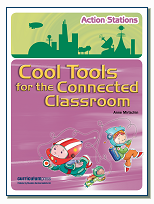
A flatclassroom f2f
Words cannot begin to describe the amazing experiences that we had whilst in Doha, Qatar, in January 2009 for the flatclassroom conference.
However, as part of my reflections, I will take a look at it through my eyes in respect to:-
- Students

VickiDavis with Omani students
- teachers
- travellers
- leaders
- parents
Eyes upon the students
We left amidst some angst as to the Gaza situation in Israel. (Parents had been concerned about going to the Middle East anyway, even before this situation eventuated!) Many would see it as a high risk undertaking. The three girls from my class had not been out of Australia before. Summer school holidays meant that we had to do all our communicating online . Once at the airport, the girls soon learnt the routine of passports, security, laptops, immigration control etc. After a journey totalling more than 28 hours, we arrived in Doha, Qatar and were transported into another ‘world’ – a land that was white, featuring middle Eastern style buildings, crazy traffic, constant building activity and white sand everywhere. The girls were immediately impressed.
The first days were spent shadowing students around the Qatar Academy, helping with conference administration, packing the showbags and helping teach a grade 5 class how how to use voicethreads etc. The girls gradually became familiar with the massive, magnificent school buildings and due to friendly host families, settled in well. The school itself, had a full range of cultures, creeds and nationalities. This is in stark contrast to our school where we have a monoculture of Anglo Saxons.
How wonderful it was to see them mixing with these different groups. When  the conference started, there were students from many countries. They met their Omani and American classmates from the flatclassroom project of 2008. The Omani students were, of course dressed in traditional dishdasha and kommah, the African boys attired in suits, the girls from Africa in more formal gear, the Qatari girls in hijabs and the Pakistani girls in their traditional dress. Accents had to be closely listened to, so that we understood what was said. When Carly was introduced at one stage, she was immediately
the conference started, there were students from many countries. They met their Omani and American classmates from the flatclassroom project of 2008. The Omani students were, of course dressed in traditional dishdasha and kommah, the African boys attired in suits, the girls from Africa in more formal gear, the Qatari girls in hijabs and the Pakistani girls in their traditional dress. Accents had to be closely listened to, so that we understood what was said. When Carly was introduced at one stage, she was immediately  called ‘Cauliflower” Some names we could not even attempt to pronounce and I simply called the students from Oman “Boys!” when I need to catch their attention.
called ‘Cauliflower” Some names we could not even attempt to pronounce and I simply called the students from Oman “Boys!” when I need to catch their attention.
The skype session with Tom Friedman was rather amazing. He wanted the students to ask him questions, which I thought was taking a huge risk. What would they ask? Would enough ask questions to fill in the time? Surprisingly, students young and old, from all countries represented came up to the microphone and asked some amazing and incredibly mature questions. Tom responded immediately and appeared to have no difficulty with the many and varied accents.
When the conference commenced, my girls were grouped with students from other countries to work on a project involving an issue common to all of them eg poverty, racism etc One of my girls, was placed in a group where the common language was Arabic. So, the Arabic had to be translated back into English for her. Another group had English as their most common language but google translator was used to translate into Arabic for the Qatari student in the group. On the second day of the conference, a presentation had to be made by student groups, to all conference

Tarzy's group
participants. The aim was to try to convince the audience to vote their project in, to become the next flatclassroom project for 2009. One of my girls said that she had never been “so scared in all her life.” Yet, she got up and spoke with confidence and played her role admirably to the assembled crowd. Another, had her mother

Presentation time
online until 1am in Australian time, helping her to cope with her nerves and stomach butterflies. All students were pushed well beyond their comfort zones, at so many times, during their stay.
We learnt about the importance of gift giving in some cultures. The students from Oman gave all schools involved small gift and provided tasty sweet Omani treats to try at the end of the conference. The conference showbags also bore evidence of Qatari customary gift giving with printed tshirts, usb drive, a coffee mug etc inside
Despite the differences, there were so many similarities amongst the students – the same passions, interests, needs and goals!
Eyes upon the teachers
How absolutely wonderful it was to see the students who had been involved in the flatclassroom project 2008, face to face. These included the boys from Oman and the students from two different schools in USA. It was also great to see them all mixing comfortably and gaining a deeper understanding of the different cultures. Yet underneath this difference, were common interests, pursuits, emotions, problems, goals and ideals.
The highlights for me were working with Julie Lindsay and Vicki Davis, the founders of the flatclassroom projects. These two women work so well together, yet have only met 5 times face to face. The powerful outcomes of their work are testimony to their successful collaboration and virtual teamwork. Estie Cuellar from Texas and Salim Al-Busaidi from Oman were two teachers who I worked with in the flatclassroom project in 2008 and it was so good to connect with them face to face. Whilst in an elluminate staff meeting, Salim encouraged us to come to Qatar, as in his words “we are a safe country”. Any fears that I had harboured were dispelled by this statement. I loved meeting face to face some of my other twitter friends – Anne Baird from Australia and Paul McMahon, an Australian in Hong Kong, Heather Davis, a Canadian in Beijing and Jeff Utecht from Bangkok. Then there were the new connections with Chris Chater from Paris (whose work with online music is admirable), Soniiya Jahangir from Pakistan and two teachers from India, teaching in Saudi Arabia and George Haines from New York. Ray who was such a kind host to us and Jill Boulanger and Beverley Stubbs from Qatar Academy ensured that we were comfortable and welcomed at the school. The list could go on but I will stop there.
Watching my students grow in confidence and push themselves beyond all boundaries was a source of great pride. To see them have a go and present publicly to such a varied but distinguished audience, was quite uplifting. We were also so proud to celebrate Australia Day in Qatar.
During the conference, I spent time in the ISTE sessions which challenged us regarding the leadership role that educationalists should take on in the digital age. The conference event was made possible by the support of the International Society for Technology in Education (ISTE) with Don Knezek (CEO) and Lynn Nolan (Senior Strategic Initiatives Officer) coming to Qatar to lead workshops. The elective sessions using online music sites and google applications with Chris Chater and Paul McMahon, respectively, were practical, highly useful and inspiring.
On the last day, teachers were mixed in groups with educaionalists from other countries, with a student project manager, a problem based project, complete with skill challenges and time pressure. We had to pitch our outcome at each of the groups. By this stage, I knew just how the students must have felt.
Eyes upon the leaders
The organization was superb. Julie Lindsay worked long and hard hours behind the scenes securing sponsorship, organizing facilitators, students, teachers, programs, showbags, catering, facilities, visas, the tech team etc. Vicki Davis facilitated the student summit sessions. These were based on “Project Based Learning” and empowering students with great learning outcomes. They learnt to connect, communicate and create together. Their skills in using web2.0 tools were improved substantially with the expertise of Vicki Davis. A producer from Hollywood, tutored the students in film making and using music under the guidance of Chris Chater from Paris. Digital citizenship and netiquette were constantly reinforced and learnt through experiencing. It was inspirational to see the students presenting with competence and confidence, to the large audience, as a result of their summit collaboration. Thank you to Julie and Vicki, our flatclassroom co-founders and the other facilitators for your great work.
Eyes upon the parents
One of the really interesting outcomes of this experience, was the involvement of parents. This was something unplanned and unforseen, but ended up playing a key role in our connectedness. As we were on school holidays the majority of planning and communication had to be made online,. The girls had set up membership to the flatconference ning and wiki prior to departure. Before they left, the girls became ‘the experts’, helping their parents to register for the ning , join our school group and showed them how to write messages, comments and blog posts. This meant that parents experienced the conference with us. Photos and videos were uploaded daily, with blog posts written when possible. Parents commented regularly on all our pages and activities. They were able to watch the sessions that were webcast and one parent stayed up until 1am to watch her daughter make her presentation. They even joined in on the chatzy back channel and could see the commentary going on behind the scenes. We received photos of the Australia Day breakfast, held in Hawkesdale as part of the Australia Day celebrations, an hour after it finished, as one set of parents had uploaded them to the ning. They became part of our learning network.
Eyes upon the travellers
We were fortunate to arrive in Qatar three days earlier. Julie took on the extra workload of organizing accommodation for us with Qatar Academy staff. By the time the conference started, we felt quite comfortable and at home at the school. Students shadowed their host students around at school and experienced a typical school day in Doha. The hospitality of our hosts was wonderful. They were kind, caring and sharing.
For four or five nights, we stayed at the Gloria hotel in Doha. This was situated in the old town within walking distance of the souqs and the Islamic Art museum. The hotel was beautifully furbished, attentive to the needs of its guests and provided wireless internet connection (which kept us all connected to those back home)
Two or three buses picked us up from the hotel door and took us to the Qatar Academy for the conference or other activities. This was a great chance to socialize, listen to the student chatter, enjoy some laughs and talk about our experiences. I shall never forget that last night on the bus, with students from Australia, USA and Ethiopia and Kenya, singing their national anthems with pride, gusto and emotion! Then they sang songs that they all knew, one being “If I could fly” which seemed to be so appropriate.
There was a good balance of sight seeing tied in to the conference. As this country is quite different to the home country of many of the visitors, it was great to be able to have time set aside for us to do some touring. It also gave us all a chance to mix and get to know each other in a more casual atmosphere.
Ray played the patient, caring host and took us to the souqs (when it rained), the half day desert tour to the inland sea, the corniche and the Islamic Art museum. The Sunday evening was spent at the souks again where we all scattered in various directions to find something to eat and souveneirs to purchase. The stalls selling hunting falcons were most intriguing. Anne Baird, Paul McMahon, Ray and I enjoyed a wonderful Arabic meal of dipping sauces, hommus, traditional chicken and rice dishes and fresh, warmed, unleavened breads.
The conference meals were varied and tasty. There was always a choice of dishes. The dinner on the Saturday evening , set in a formal atmosphere with the HSBC guest speaker was a fitting end to the first day of the conference. The buffet bar of the school canteen was always appealing. The weather was pleasant as it was winter time.
The final night was spent at Villagio in the new town. This is an ultra modern shopping complex, with painted skys on the roof, the best in fashionable shops, a canal complete with gondolas providing rides for interested parties, an ice skating rink and the usual Western fast food chains.
Eyes on the sponsors
There were many sponsors involved and we cannot thank them enough – the chief one being the HSBC who sponsored the conference whilst in Qatar. One of their representative spoke to us at the formal dinner. The Qatar Academy provided the venue, staff and other incidentals. For us personally, ACE radio helped to sponsor my students in their travel and our local Hawkesdale and District Action Committee also donated some money.
Eyes that are now opened!
How proud we were, to be Australian, when Australia Day fell on the last day of the conference! However, we came home with American tinged accents!
This was a truly amazing, life changing experience that will equip us for the flat world that of ourfuture. We can now state that we have experienced the impact that the digital age will have in a flat world. Thank you to all involved!
Crossposted
Footnote: Skills learnt – understanding and working with different cultures, netiquette, digital citizenship skills, communication skills in an online environment, the use of many different web2.0 tools, how to collaborate and work in a virtual team, risk taking, pushing outside personal comfort zones, real life pressures of time commitments/project management and how to create effective products for online use and a global audience. How to live, work and play in a globally connected world!












 the conference started, there were students from many countries. They met their Omani and American classmates from the
the conference started, there were students from many countries. They met their Omani and American classmates from the  called ‘Cauliflower” Some names we could not even attempt to pronounce and I simply called the students from Oman “Boys!” when I need to catch their attention.
called ‘Cauliflower” Some names we could not even attempt to pronounce and I simply called the students from Oman “Boys!” when I need to catch their attention.




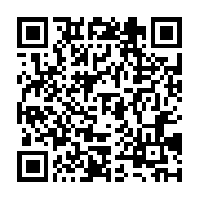




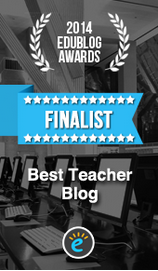

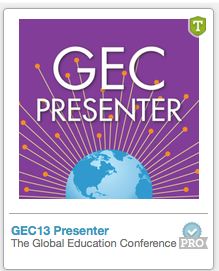
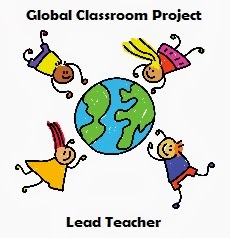
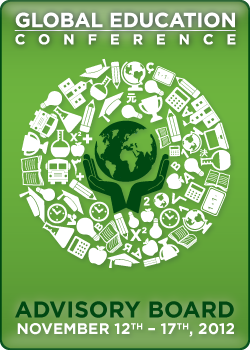
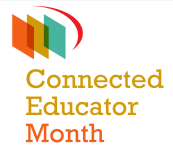
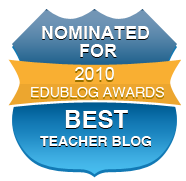




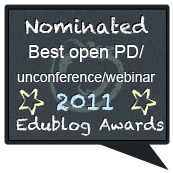
 Twitter/murcha
Twitter/murcha Del.icio.us/murcho
Del.icio.us/murcho GMail/Anne M
GMail/Anne M Blog/Anne M
Blog/Anne M